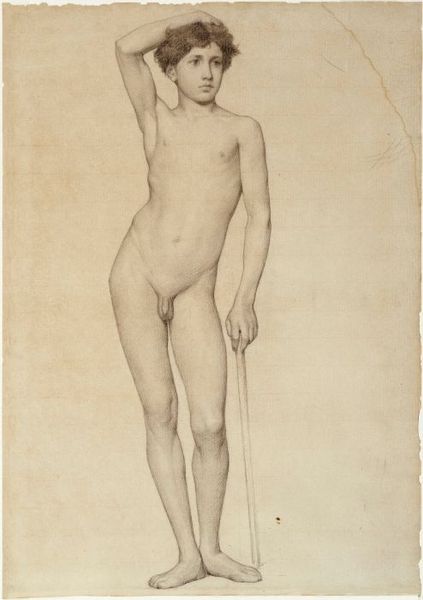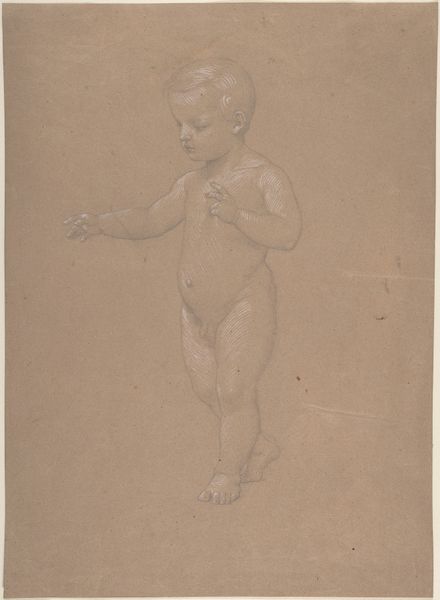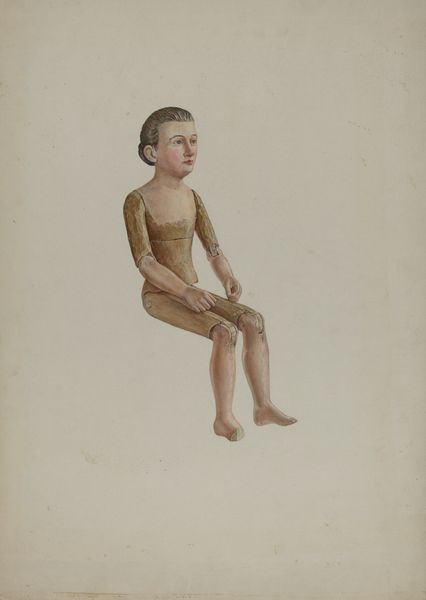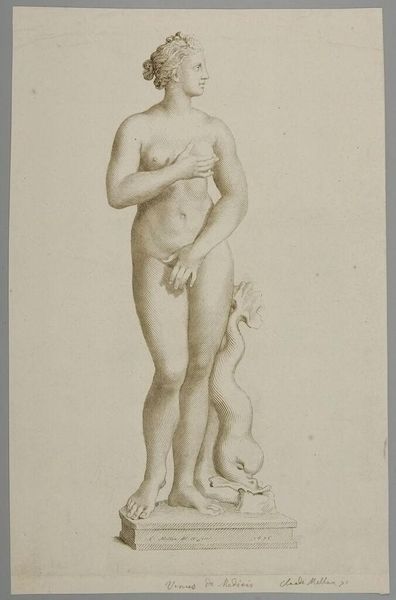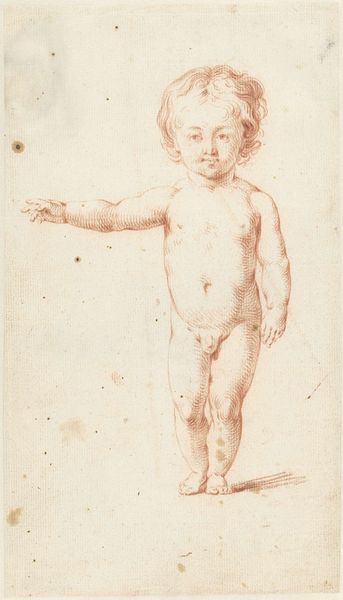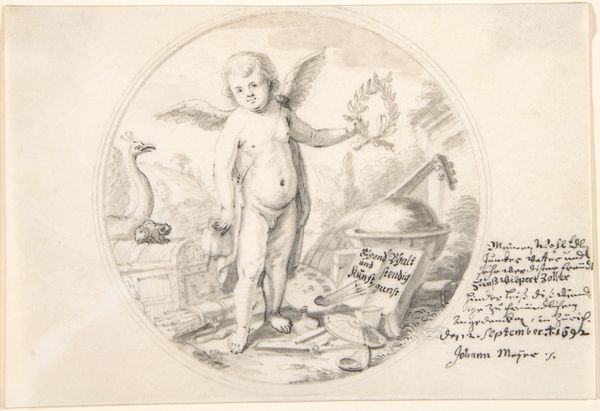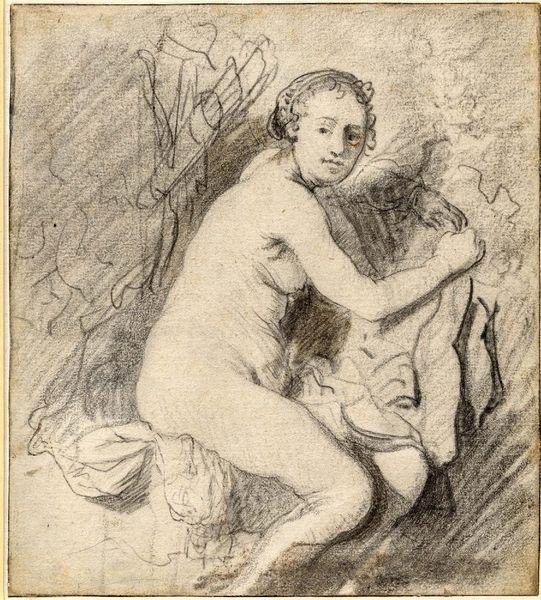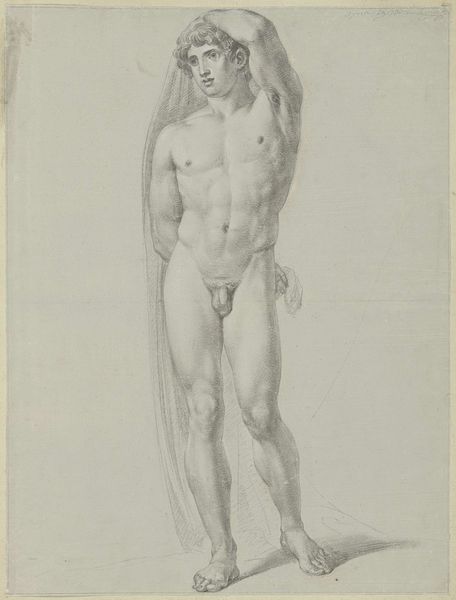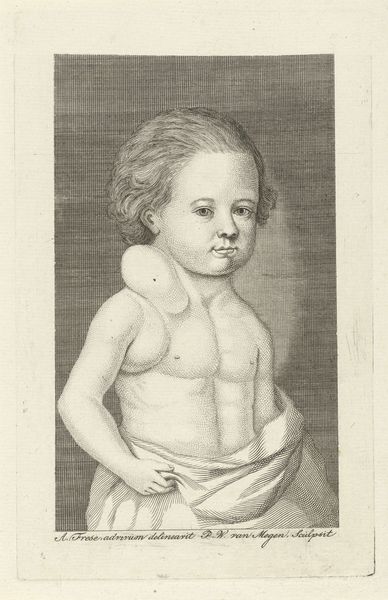
drawing
#
drawing
#
toned paper
#
facial expression drawing
#
light pencil work
#
pencil sketch
#
pencil drawing
#
coffee painting
#
portrait drawing
#
pencil work
#
watercolour illustration
#
watercolor
Copyright: Public Domain: Artvee
Curator: Simmler's "Study of a nude boy against a landscape", dating from 1858, is an intriguing drawing using pencil on toned paper. It showcases a lightly sketched figure against a barely defined backdrop. Editor: It feels melancholic somehow. The muted tones and the boy's distant gaze evoke a sense of longing or perhaps introspection. He looks a bit out of place, a classical figure lost in a hazy, half-formed world. Curator: Consider the material context, though. Paper in the 19th century was undergoing rapid industrialization, impacting art accessibility. The toned paper provides a mid-tone, which is strategic for working with pencils to define lights and darks with economy. Editor: Right, but the technique is so delicate, the lines almost disappearing. It makes me think of memory and how fragile it can be. The wisps of landscape and his ethereal companion could be dreams barely held together. And what's that fishing rod for, I wonder? Curator: It's essential to observe how Simmler constructs the nude figure, drawing from classical ideals. We see a young boy presented with detail, contrasted by the rudimentary nature of the landscape and other figural form. This disparity emphasizes artistic decision-making in figure studies within an academic framework. The visible pencil strokes betray process, revealing the artist’s labour. Editor: I get that, and still, I feel an incredible softness. Like the whole drawing is exhaling. The limitations of the pencil maybe forced the artist to distill the scene to its essence, making it even more potent and evocative. Maybe he had to work with poor tools? Who knows how expensive high-grade drawing tools were then? Curator: Indeed. Analyzing the socioeconomic realities of the artist's workshop opens the artwork up to a far broader narrative about the conditions of artistic creation. We shouldn't divorce the artwork from how material and skill were cultivated during that time period. Editor: Point taken. Still, looking at it one last time, I keep circling back to that sense of loneliness in that young face, a vulnerability underscored by the spare beauty of the medium itself. The process enhances the effect, maybe, as it brings the materials themselves closer to being "present". Curator: Absolutely. Understanding the economic constraints allows a deeper respect for how artists maximized the available resources to leave a striking, if seemingly unfinished, work.
Comments
No comments
Be the first to comment and join the conversation on the ultimate creative platform.
